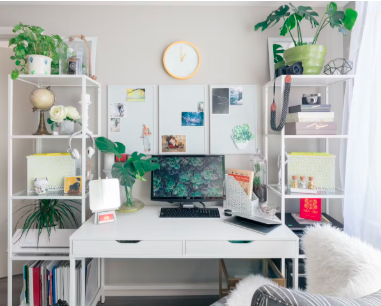A well-designed study space can make a meaningful difference in how students focus, learn, and succeed. In 2025, with more learning happening at home or in flexible environments, having a personalized and inspiring study zone is more important than ever. Here’s how students can create a space that encourages motivation and productivity.
1. Choose the Right Location
A quiet, low-traffic area is ideal. Whether it’s a corner of a room, a dedicated desk, or a library nook, the key is to find a spot where distractions are minimal. Natural lighting can also help boost focus and mood, so setting up near a window is a smart choice if possible.
2. Keep It Clutter-Free
A tidy space clears the mind. Keep only essential items on your desk—such as a notebook, pens, and your study materials. Use drawers or organizers to store away non-essential supplies and keep cables neatly arranged. A clean space can reduce stress and support better concentration.
3. Personalize with Purpose
Make your study area feel welcoming. Add a plant for a touch of greenery, hang motivational quotes on the wall, or use a calendar to track your goals. These small touches help create a space that reflects your personality and keeps you inspired to stay on track.
4. Ensure Comfortable Seating
An ergonomic chair or well-supported seating is important for long study sessions. Your back and posture will thank you. The desk and chair height should allow you to work comfortably without strain.
5. Light Matters
Good lighting reduces eye strain. If natural light isn’t available, opt for a desk lamp with adjustable brightness. Warm light tones can help create a calm environment, while cooler lights are great for alertness.
6. Limit Digital Distractions
Keep your phone out of reach or use apps that block social media during study hours. Consider a dedicated study device or use browser extensions that help you stay focused on academic tasks.
7. Add a Touch of Technology
A whiteboard or corkboard can help you visualize your tasks and deadlines. Noise-canceling headphones or soft background music can help block out distractions, especially in shared spaces.
8. Maintain a Routine
Having a consistent study schedule and returning to the same spot helps train your brain to focus. Over time, simply entering your study zone can signal to your mind that it’s time to learn.
Conclusion
In 2025, creating a study zone is not just about furniture and supplies—it’s about shaping an environment that supports your goals and helps you succeed. By taking a few intentional steps, students can build a space that fosters concentration, reduces stress, and encourages achievement. Whether big or small, your study space has the power to spark long-term success.













